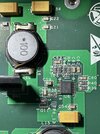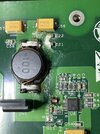underwaterchippie
New Member
Currently thinking to repair the following analog board. I spotted a problematic area where a few capacitors have burned out. Any advice on how to tackle this challenge? Below a comparison between a good and a bad board:
Much appreciated
Much appreciated



